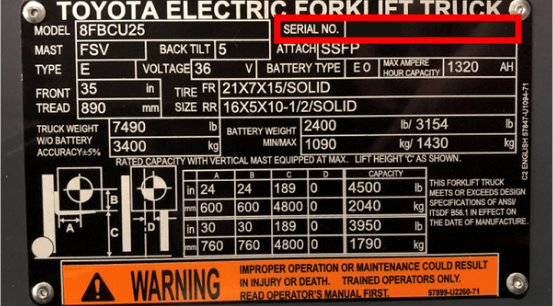Toyota Lean Management and 5S

Woven within the culture at Toyota Forklift is passion for daily improvement. Although our systems and daily lives may work sufficiently, we are always looking for ways to enhance safety and increase efficiency and productivity. One way all of our associates stay accountable for these values is through the Toyota Lean Management operational processes, including “5S”.
The process of 5S was coined and made popular by Toyota. It is based on 5 principles starting with the letter “S”. In Japanese, Seiri (Sort), Seiton (Systematize), Seiso (Shine), Seiketsu (Standardize), and Shitsuke (Sustain). The implementation of 5S is one reason that Toyota Industrial Equipment continues to be one of North America’s most highly efficient manufacturing facilities. The principles of 5S can be applied to any business setting, manufacturing/factory setting, or even in your personal life to help organize your home and practices. You can watch the video below and use the reference paragraphs to help you understand how 5S can help you become a more effective organizer of materials as well as a safer, more productive company or individual.
1. Seiri – Sort
The first stage of 5S is to sort. This means going through items and deciding what is necessary and what is not to reduce clutter. The reduction of clutter leads to safer more secure spaces. Throwing away unnecessary items may be difficult, but it’s important to maximize space and efficiency. Sorting also forces you to think about how items are used in people’s daily lives. If you are unsure about a certain item, it is useful to create an “unknown category” and track their use in a week or a month to determine if they are necessary in that particular space. If the items aren’t used in your specified time period, they are unnecessary. Employers often find it surprising how many unneeded items are in workspaces that cause spatial or productivity inefficiencies.
2. Seiton – Systematize
Following sorting, systematizing or straightening is the next step in our lean process. This quite literally means, creating a system for a particular space. Make sure there is a place for everything and everything stays in its place. Labeling spaces with items and number of items helps to systematize your storage and also helps in a later stage (standardize). During Seiton, it is also vital to think of the flow of a workspace. What items get used the most and at what time? Who enters and exits this space? Recalling and analyzing purpose is important when systematizing.
3. Seiso – Shine
As systematizing a workplace creates a space for everything, shining is that refining step. While shine does imply cleaning and tidying items, it also calls for fixing problems. As you are cleaning a space, you may notice the inconsistency in the order of items or the lack of organization. In this step, make those changes or implement countermeasures as you go.
4. Seiketsu – Standardize
This step is about creating a safe, efficient and successful practices to efficiently complete a process or task that can be duplicated to optimize the performance of the process or task. Standardization promotes safety and allows the process to be easily shared among team members. Completing a process or task in the same safe and efficient way each time allows you to identify and address systematic breakdowns and to replicate continuous success in performing the task or process. Many employers find it helpful to develop rules in order to hold everyone accountable. For example, in a copy room in an office setting, the rule may be “maximum 30 envelopes, minimum 10.” In this case, the written rule holds anyone who takes the 10th envelope accountable to replenish the envelopes. This can work similarly in manufacturing facilities with supplies.
5. Shitsuke – Sustain
The last step in the 5S process is truly never-ending. Sustaining is an important step and potentially the most difficult part of the process. The process must be consistent with the rules developed throughout the 5S. Along the same lines, sustaining also means a constant drive for improvement. Just because a process or rule is in place doesn’t mean that there can’t be a conversation about an improvement or evolution among employees. Keeping up with the times and sustaining a space means that the 5S process never stops. Because we pride ourselves in efficiency, we have a commitment in our manufacturing facilities and work spaces to maximize safety and our production with Toyota Lean Management and through the 5S process.
Toyota is world renowned for its excellence in safe and efficient operations and continuous improvement. Toyota encourages you to consider applying 5S principles to your workplace today.


